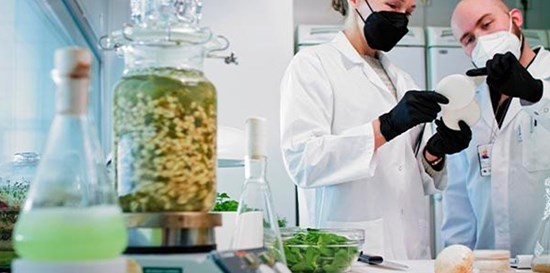Cell agriculture export potential for Finland €500 million-€1 billion by 2035: Report


VTT Technical Research Center of Finland, Natural Resources Institute Finland and University of Helsinki have investigated the current state of cellular agriculture and listed eight recommendations for policymakers at the request of the Ministry of Agriculture and Forestry and Business Finland.
Cellular agriculture is a strategically important sector that, in addition to economic growth, increases food self-sufficiency, resilience, and strategic autonomy of individual countries like Finland, but also the EU. The market volume forecast is promising, and the report estimates the export potential for Finland to be EUR 500-1000 million by 2035. In addition, significant infrastructure investments open opportunities for billions in exports of equipment, technology, and expertise.
The study was conducted by mapping the current state of cellular agriculture and the development of the operating environment in Finland and international markets. Additionally, expert knowledge was gathered through stakeholder interviews and vision workshops.
What is cellular agriculture?
Cellular agriculture involves the use of cell cultures, such as microbial, algae, plant, insect, or animal cells, and bioreactors for food production. Cell factories produce various ingredients, such as proteins and fats, for the food and feed industries. Additionally, cell cultures can produce ingredients for products like coffee and cocoa, whose traditional cultivation is becoming challenging due to climate change.
Business Finland has funded long-term research in the field, and it has granted around EUR 90 million in research and development funding for cellular agriculture to companies in the field between 2018 and 2025.
Feedstocks, energy infrastructure, and top experts are Finland’s competitive advantages
There is plenty of carbohydrate-rich side streams, such as straw, sawdust, wood chips, and grass biomass in Finland, which could be utilized as feedstocks for cellular agriculture. For example, if more than half of the straw were used as a sugar source for cell factories, the produced microbial protein would be enough to meet the annual protein needs of Finns.
“Top-level expertise in industrial biotechnology combined with the processing knowledge of agricultural and forestry biomass and renewable energy infrastructure can offer Finland a competitive edge. As a small and agile country, we can collaborate smoothly and create innovations that integrate cell factories seamlessly into the food production system,” summarizes Emilia Nordlund.
“Compared internationally, Finland is at the forefront of development, but now it is important to take action and realize the predicted growth opportunities for the sector. Finnish companies should recognize their strengths as part of emerging new value networks and build their competitiveness in the long term together with research organizations. Business Finland is already currently funding ambitious cellular agriculture RDI projects, so there is no need to wait for a separate program,” says Executive Director Teija Lahti-Nuuttila from Business Finland.
Report’s eight steps to promote cellular agriculture in Finland
- Accelerate investments in infrastructure
- Expedite EU-level regulatory processes
- Launch an RDI program
- Establish a Ministry of Future Food
- Secure future experts for the sector
- Support consumer communication and enable public tastings
- Integrate primary production into cellular agriculture value chains
- Target support functions for exports
More information:
Press release: Cell factories boost Finland’s food exports – report lists eight measures to renew the food system and realize growth potential (VTT, 9 April 2025)
Kestävää kasvua solumaatalouden arvoketjuista: Toimenpidesuunnitelma Suomelle
Originally published on 9 April by Business Finland.
Announcements are published as a service to readers. The sender is responsible for all content.
Announcements for publication can be submitted to in**@ar*********.com.